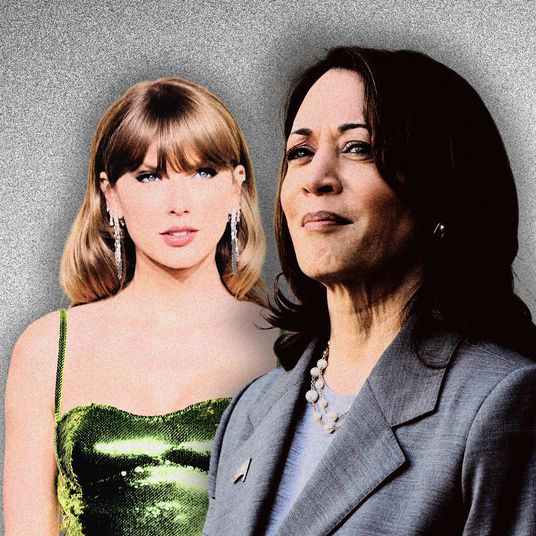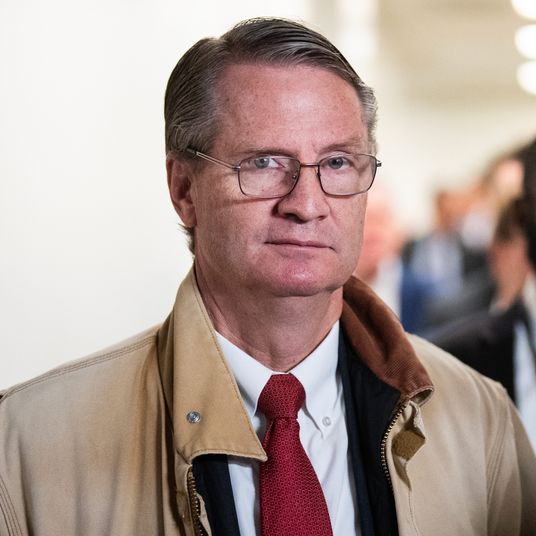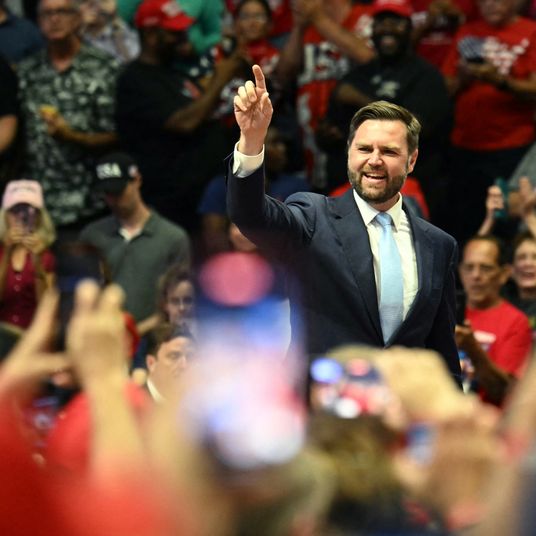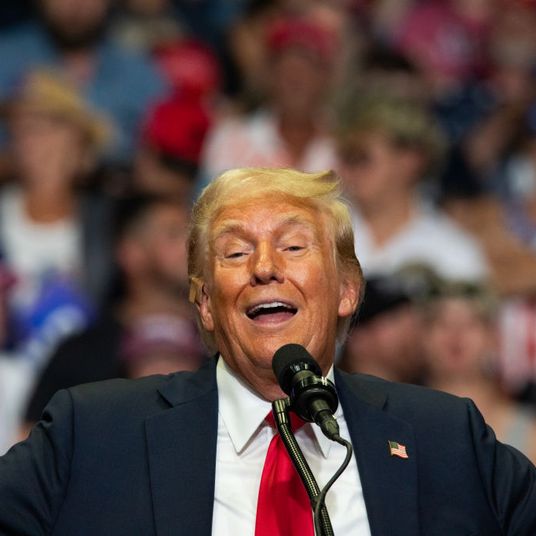If there’s one enduringly destructive problem with New York City sports franchises, it’s that every team is expected to win a championship, or at least chase after it in desperate good faith, every year. They don’t do rebuilding in New York — because of the inherent financial advantages of running a team here, to insist on anything less than total domination, all the time, seems somehow defeatist. It’s Donald Trump meets George Steinbrenner: If you don’t win everything, you’re a loser.
The thing about this strategy is that it produces a lot of losers. The Yankees fostered the illusion that their dominance since the ’90s was the result of some secret capitalist formula only they understood, but the real secret to their success was young, cost-controlled talent; some happy postseason kismet; and Mariano Rivera. The only time the Yankees ever truly spent their way to the title was 2009, when they invested more than $400 million in three players mere weeks into the 2008 financial collapse … and two of those contracts (Mark Teixeira and CC Sabathia) ended up being massive albatrosses that still weigh the team down today. And despite their dead-cat bounce to the Wild Card game in 2015, the Yankees are in fact rebuilding — turning away from crazy-high-dollar, long-term contracts and focusing on cheaper, younger talent. But it’s going to take them a while: They’ll still be paying Alex Rodriguez a full year after President Trump’s inauguration.
And the Yankees are the success story. Aside from a couple of lucky playoff runs for Rex Ryan’s Jets and Tom Coughlin’s Giants (okay, yes, they won two Super Bowls, but those victories are somehow very hard to believe in retrospect), every local franchise has seemed like an also-ran every year for a decade. By the imperial logic of the city, this means these teams haven’t just felt like disappointments; they’ve felt like minor-league squads, undeserving of the big-time ticket and television revenue they get from the country’s biggest market. The Jets, the Mets, and especially the Knicks have been national jokes for so long not just because they’re usually bad, but because they’re bad in New York.
Which is why it has been such a relief, in the past few months, to see something sort of amazing happening. Those three teams, the Jets, Mets, and Knicks, are doing something we haven’t seen in New York in decades: They’re not acting like New York teams at all. They’re showing wisdom, patience, and the kind of understanding of their non-exceptionalism that you must have to succeed given the way sports are structured. They’re not necessarily rebuilding, but they’re not pretending the rules of gravity don’t apply to them either.
Not coincidentally, they’re finally becoming a little more tolerable to watch and cheer for. They’re not half-bad. And as even jaded, cocky New York fans can probably now admit, not half-bad is actually pretty fun. Especially if what has made your disaster of a team suddenly not half-bad is seven-foot-three freak of nature Kristaps Porzingis, a 20-year-old Latvian who plays like what would happen if Dirk Nowitzki and Hakeem Olajuwon mated with an ostrich who had watched a ton of hip-hop growing up. (He’s a “Reason to Love New York.” )
The Knicks are surely the most surprising feel-good-by-feeling-meh story of the year. But the Mets got there first. Their resurgence toward the end of the 2015 season was maybe more about pure good luck than the team would like to admit — if the Nationals hadn’t imploded, the Mets likely wouldn’t have made the playoffs at all — but it wasn’t entirely unplanned either. The Mets’ trump card was their inability to act like a typical New York team. Because of the Madoff mess, they were fiscally incapable of signing aging players to crippling long-term contracts and/or trading away key prospects for veterans. Thus, they allowed those lightning–bolt starting pitchers to develop instead of rushing them or sending them away, and they even flipped some of their own veterans (R. A. Dickey, Carlos Beltrán) for prospects (Noah Syndergaard, Travis d’Arnaud, Zach Wheeler), the opposite of what usually happens.
The Jets, for all their success under Rex Ryan (almost all of which came in his first two seasons), always had the feel of a team more interested in the back page than the Super Bowl. Rex’s perpetual (and perpetually entertaining) antics. Constantly signing big names to one-year contracts to “win the offseason.” Preening for the cameras on HBO’s Hard Knocks. Most infamously, bringing in Tim Tebow for reasons that still confound the imagination (and confused even Tebow himself). The Jets have always learned the wrong lesson from Joe Namath: Namath was a superstar because he was an outsize figure and a winner. The Jets were only one of those things, which is why their signature highlight of the last five years remains Mark Sanchez’s butt fumble. But with Ryan in Buffalo, the Jets got serious this offseason. Todd Bowles is a notoriously no-nonsense coach — reporters have been driving themselves nuts trying to get anything out of him — but he’s beloved by his players. He has come to the Jets and essentially settled everything down — the team is boring and competent and normal, and better than it has been in years. Even the Jets’ big dramatic moment this year, when quarterback Geno Smith had his jaw broken by a teammate, turned out for the best: Bowles immediately cut the player (who was of course picked up by Ryan and selected as a team captain when the Bills played the Jets) and replaced Smith with Ryan Fitzpatrick, who has played better for the Jets than Smith ever did. Bowles is a no-drama person for a franchise that has desperately needed an even keel. He’s just a regular coach. And it’s working.
But nowhere does the change feel more dramatic than at Madison Square Garden. Last year’s team won 17 games and had the lowest winning percentage in franchise history, but it was still somehow worse than that. Carmelo Anthony led the Knicks in total points while playing in less than half their games. (And he wasn’t even that good when he played.) At times you wondered if they’d just grabbed the ten tallest people they could find off the street, put Knicks jerseys on them, and watched what happened. It was the nadir of Jim Dolan’s time as owner of the Knicks, and there have been many, many nadirs.
Now, the Knicks of the past would have spent the offseason trying to bring in every bad contract they could find. But under Phil Jackson, an old dog who turns out to have some surprising new tricks up his sleeve, they did something fascinating: They simply went about the dull business of putting together a semi-competent team. Jackson brought in veterans like Robin Lopez, Kyle O’Quinn, and Arron Afflalo. He worked with Carmelo to make him feel more like a part of the team. Most important, he dove in on Draft Day, bringing in point guard of the future Jerian Grant and, best of all, that amazing Latvian. Is he the best draft pick since Patrick Ewing 30 years ago? How is that even possible? Ten years ago, the Knicks might have traded him for the last legs of Antonio McDyess. Now they have a potential superstar … and a team that, doggone it, is kind of a blast to watch.
Are they a title contender? No. But for once, that’s not the point. The old Knicks logic — compile superstars, pay them maximum contracts, and see what happens — looks particularly foolish in the wake of the emergence of the Golden State Warriors, who’ve stockpiled talent and embraced advanced concepts like efficiency and floor-spacing to maximize the value of the three-point shot. Jackson has noticed: Take core players like Porzingis — who hasn’t even shown off his three-point shooting yet — and build around them, but don’t pay maximum money just so Carmelo has some friends to play with. Like the Mets and the Jets, the Knicks have finally figured it out. (Until Dolan starts meddling again, of course; if that happens, all bets are, as always, off.) These teams might not win championships — though the Mets were close; you never know! — but they will be better than they were last year without mortgaging the future chasing fool’s gold. We’ve spent a decade mocking the Jets, Knicks, and Mets, and they’ve spent that decade running in circles because they thought that’s what we wanted them to do. But all we wanted was just not to be embarrassed. It’s astounding how much that feels like progress and amazing how fun that is to follow. So this is what it’s like being a fan in Milwaukee, or Seattle, or Charlotte. It’s not terrible! It sure beats what it’s usually like around here.
*This article appears in the December 14, 2015 issue of New York Magazine.






























